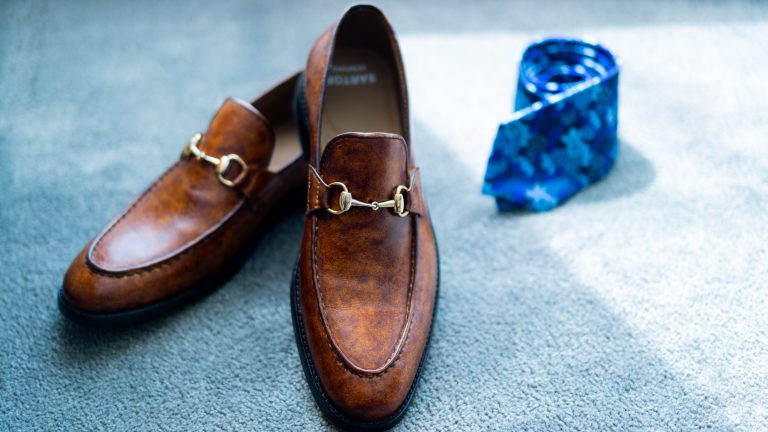1. How can you tell the quality safety shoes?
In today’s bustling world, where safety is paramount, safety shoes have become an essential part of our lives, especially in occupations that involve physical labor or exposure to hazardous environments. The quality of safety shoes can significantly impact an individual’s safety and well-being. But how can one discern the quality of safety shoes amidst the plethora of options available in the market? In this article, we will delve into the essential aspects that determine the quality of safety shoes, guiding you to make an informed choice for your protection and comfort.

1. Understanding Safety Standards
Safety shoes are designed to meet specific safety standards to protect against various workplace hazards. Understanding these standards, such as ASTM F2413-18 for toe protection and slip resistance, is crucial in assessing the quality of safety shoes.
2. Material Matters
Quality safety shoes
Quality safety shoes are crafted from durable materials like leather, which not only provide protection but also ensure longevity. Additionally, breathable materials enhance comfort, making them suitable for prolonged usage.
3. Toe Protection
Steel, composite, and aluminum are commonly used materials for toe caps. These materials offer different levels of protection. Steel offers robust protection against heavy objects, while composite and aluminum provide lighter alternatives without compromising safety.
4. Sole Construction
The sole is a vital component of safety shoes. High-quality shoes feature soles made from rubber or polyurethane, ensuring excellent grip, shock absorption, and resistance to oil and chemicals.
5. Comfort and Fit
A perfect fit enhances both safety and comfort. Quality safety shoes come with cushioned insoles, arch support, and proper sizing options, ensuring that they can be worn for extended periods without causing discomfort or fatigue.
6. Water Resistance
Water-resistant safety shoes are essential, especially in environments where exposure to liquids is frequent. Waterproof materials and sealed seams prevent water from seeping in, keeping your feet dry and comfortable.
7. Electrical Hazard Protection
For those working around electricity, safety shoes with EH (Electrical Hazard) protection are vital. EH-rated shoes provide a secondary source of protection against electric shocks and electrocution.
8. Testing and Certification
Reputable safety shoes undergo rigorous testing and certification processes. Look for shoes that carry certifications from authorized bodies, ensuring they meet the necessary safety standards.
9. Durability and Longevity
Quality safety shoes are an investment. Consider the durability and longevity of the shoes concerning your specific work environment. Well-constructed shoes will outlast cheaper alternatives, providing long-term protection and value for money.
10. User Reviews and Feedback
Reading user reviews and feedback can provide valuable insights into the real-world performance of safety shoes. Consider the experiences of others to gauge the overall satisfaction and effectiveness of the shoes you’re interested in.
11. Regular Maintenance
Even the best safety shoes require regular maintenance to ensure their effectiveness. Cleaning, drying, and inspecting for signs of wear and tear are essential practices to prolong the lifespan of your safety shoes.
12. Cost vs. Quality
While cost is a factor, it should not be the sole determinant. Balance your budget with the need for quality and safety. Investing a little more in high-quality safety shoes can pay off in terms of comfort, protection, and longevity.
13. Consulting Experts
If you’re unsure about which safety shoes to choose, consider consulting experts or professionals in the field. They can provide personalized recommendations based on your specific requirements and workplace conditions.
14. Brands and Reputation
Well-established brands often have a reputation for producing high-quality safety shoes. Researching reputable brands and their offerings can guide you towards reliable and trusted options.
15. Frequent Assessments
Lastly, the quality of safety shoes can change over time due to wear and tear. Regularly assess your shoes to ensure they continue to meet safety standards and provide adequate protection.
In conclusion, choosing the right safety shoes is paramount for your safety and well-being in hazardous work environments. By understanding safety standards, materials, construction, fit, and user experiences, you can make an informed decision that prioritizes your protection and comfort.
Frequently Asked Questions (FAQs)
Q1: How often should I replace my safety shoes? Regularly assess your safety shoes for signs of wear and tear. If you notice significant damage or if they no longer provide proper protection, it’s time to replace them, usually every 6 to 12 months.
Q2: Can safety shoes be used for activities outside the workplace? While safety shoes are specifically designed for workplace hazards, some versatile models can be worn outside work. However, it’s best to have separate shoes for different activities to maintain their effectiveness.
Q3: Are there safety shoes specifically designed for specific hazards? Yes, there are safety shoes designed for specific hazards such as electrical hazards, punctures, or chemicals. It’s essential to identify the hazards in your workplace and choose shoes that offer adequate protection against them.
Q4: Can safety shoes prevent fatigue during long hours of work? High-quality safety shoes with proper cushioning and arch support can significantly reduce fatigue during extended work hours by providing comfort and support to the feet.
Q5: How should I clean and maintain my safety shoes? Follow the manufacturer’s instructions for cleaning and maintaining your safety shoes. Generally, use a damp cloth to clean the exterior, remove dirt and debris from the sole, and ensure they are thoroughly dry before wearing them again.




Leave a comment